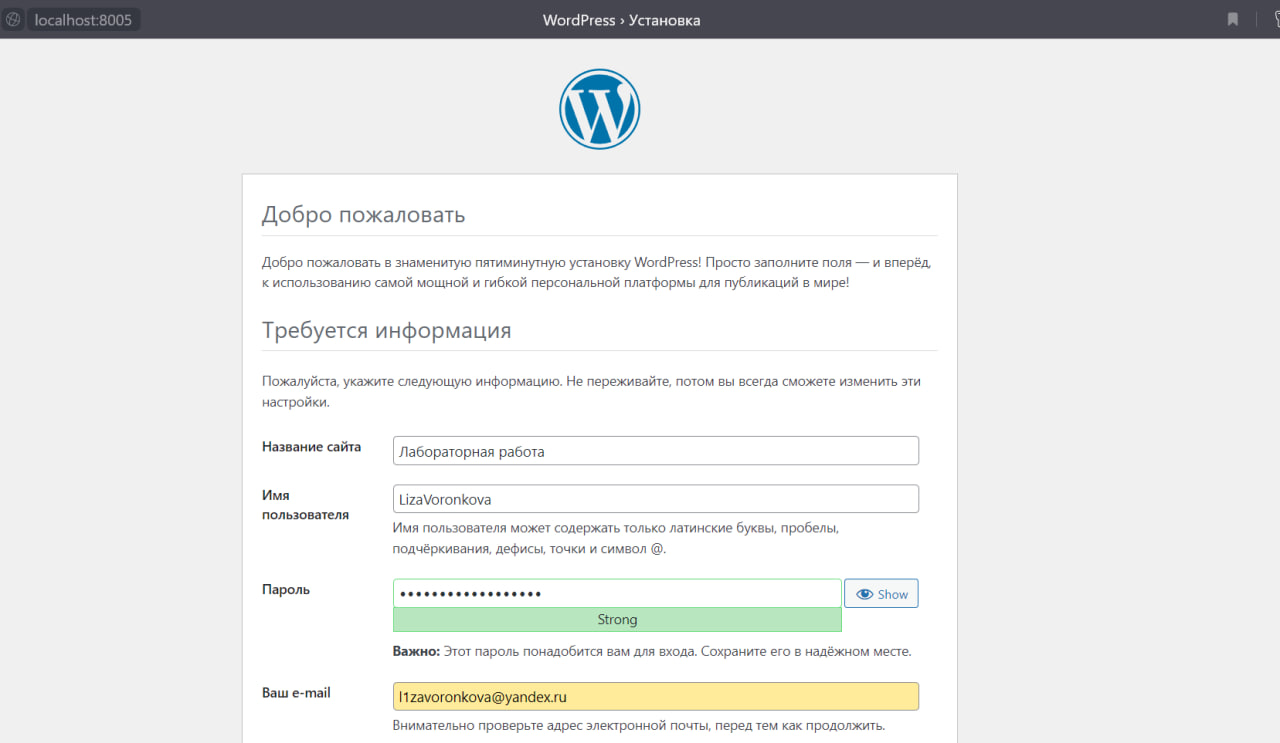6.3 KiB
Лабораторная работа №1
Выполнила Воронкова Е.С. ✨
Сервис drupal
Система управления содержимым (CMS), используемая также как каркас для веб-приложений.
Добавляем расширение, которое необходимо для drupal
create extension pg_trgm
Сервис mediawiki
Вики-движок, написанный специально для Википедии, используется во многих других проектах фонда Викимедиа, а также частных и государственных организациях.
Сервис wordpress
Свободно распространяемая система управления содержимым сайта с открытым исходным кодом; написана на PHP; сервер базы данных — MySQL.
- Import a HTML file and watch it magically convert to Markdown
- Drag and drop images (requires your Dropbox account be linked)
- Import and save files from GitHub, Dropbox, Google Drive and One Drive
- Drag and drop markdown and HTML files into Dillinger
- Export documents as Markdown, HTML and PDF
Markdown is a lightweight markup language based on the formatting conventions that people naturally use in email. As John Gruber writes on the Markdown site
The overriding design goal for Markdown's formatting syntax is to make it as readable as possible. The idea is that a Markdown-formatted document should be publishable as-is, as plain text, without looking like it's been marked up with tags or formatting instructions.
This text you see here is *actually- written in Markdown! To get a feel for Markdown's syntax, type some text into the left window and watch the results in the right.
Tech
Dillinger uses a number of open source projects to work properly:
- AngularJS - HTML enhanced for web apps!
- Ace Editor - awesome web-based text editor
- markdown-it - Markdown parser done right. Fast and easy to extend.
- Twitter Bootstrap - great UI boilerplate for modern web apps
- node.js - evented I/O for the backend
- Express - fast node.js network app framework @tjholowaychuk
- Gulp - the streaming build system
- Breakdance - HTML to Markdown converter
- jQuery - duh
And of course Dillinger itself is open source with a public repository on GitHub.
Installation
Dillinger requires Node.js v10+ to run.
Install the dependencies and devDependencies and start the server.
cd dillinger
npm i
node app
For production environments...
npm install --production
NODE_ENV=production node app
Plugins
Dillinger is currently extended with the following plugins. Instructions on how to use them in your own application are linked below.
| Plugin | README |
|---|---|
| Dropbox | plugins/dropbox/README.md |
| GitHub | plugins/github/README.md |
| Google Drive | plugins/googledrive/README.md |
| OneDrive | plugins/onedrive/README.md |
| Medium | plugins/medium/README.md |
| Google Analytics | plugins/googleanalytics/README.md |
Development
Want to contribute? Great!
Dillinger uses Gulp + Webpack for fast developing. Make a change in your file and instantaneously see your updates!
Open your favorite Terminal and run these commands.
First Tab:
node app
Second Tab:
gulp watch
(optional) Third:
karma test
Building for source
For production release:
gulp build --prod
Generating pre-built zip archives for distribution:
gulp build dist --prod
Docker
Dillinger is very easy to install and deploy in a Docker container.
By default, the Docker will expose port 8080, so change this within the Dockerfile if necessary. When ready, simply use the Dockerfile to build the image.
cd dillinger
docker build -t <youruser>/dillinger:${package.json.version} .
This will create the dillinger image and pull in the necessary dependencies.
Be sure to swap out ${package.json.version} with the actual
version of Dillinger.
Once done, run the Docker image and map the port to whatever you wish on your host. In this example, we simply map port 8000 of the host to port 8080 of the Docker (or whatever port was exposed in the Dockerfile):
docker run -d -p 8000:8080 --restart=always --cap-add=SYS_ADMIN --name=dillinger <youruser>/dillinger:${package.json.version}
Note:
--capt-add=SYS-ADMINis required for PDF rendering.
Verify the deployment by navigating to your server address in your preferred browser.
127.0.0.1:8000
License
MIT
Free Software, Hell Yeah!
